Expanding the Use of Renewable Energy with a New Electric Power Trading Support System
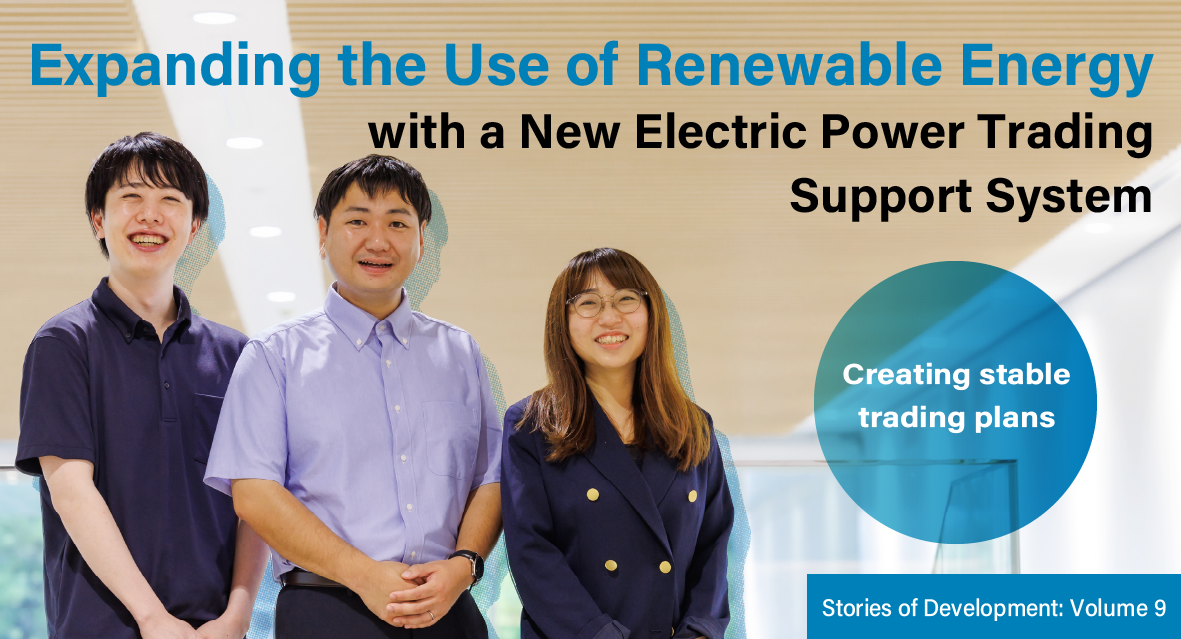
-
Storage batteries have become essential in the transition to FIP
-
Can create optimal trading plans
-
The key is risk consideration and integration of multiple models
-
Adopt financial engineering and multiple machine learning models
-
Achieve better accuracy and labor saving through flexible thinking
-
A step ahead of market entry in FY2025
In an effort to expand the use of renewable energy (renewables), there has been a rapid increase in the number of companies entering the grid-scale battery business, which involves adjusting the balance of power supply and demand to counter the instabilities of renewable energy generation.
The trading price (market price) of electricity fluctuates according to supply and demand. This means that if we can accurately forecast market prices and develop optimal electric power trading plans using storage batteries, it will support the expansion of renewable energy.
We spoke to three members of Fuji Electric’s project team that is developing an electric power trading support system to achieve this.
Storage batteries have become essential in the transition to FIP
In 2012, Japan introduced the FIT (Feed-in Tariff) system, which allows power companies to purchase renewable energy at a fixed price to increase the share of renewable energy in total power generation. As a result, the ratio of renewable energy increased from about 10% in FY2011 to over 20% in FY2022.
However, the cost of purchasing renewable energy is covered by renewable energy charge, and these are added to the electric bills of households and companies. In the aim of reducing these tariffs while also activating the energy market, Japan introduced the FIP (Feed-in Premium) system, which is linked to the market, in FY2022. Now, with the exception of some small power plants, many power producers are considering transitioning to FIP.
Under the FIT system, power producers were able to purchase power at a fixed price no matter when it was generated, so their revenue was stable, but under FIP, revenue fluctuates in line with market prices.
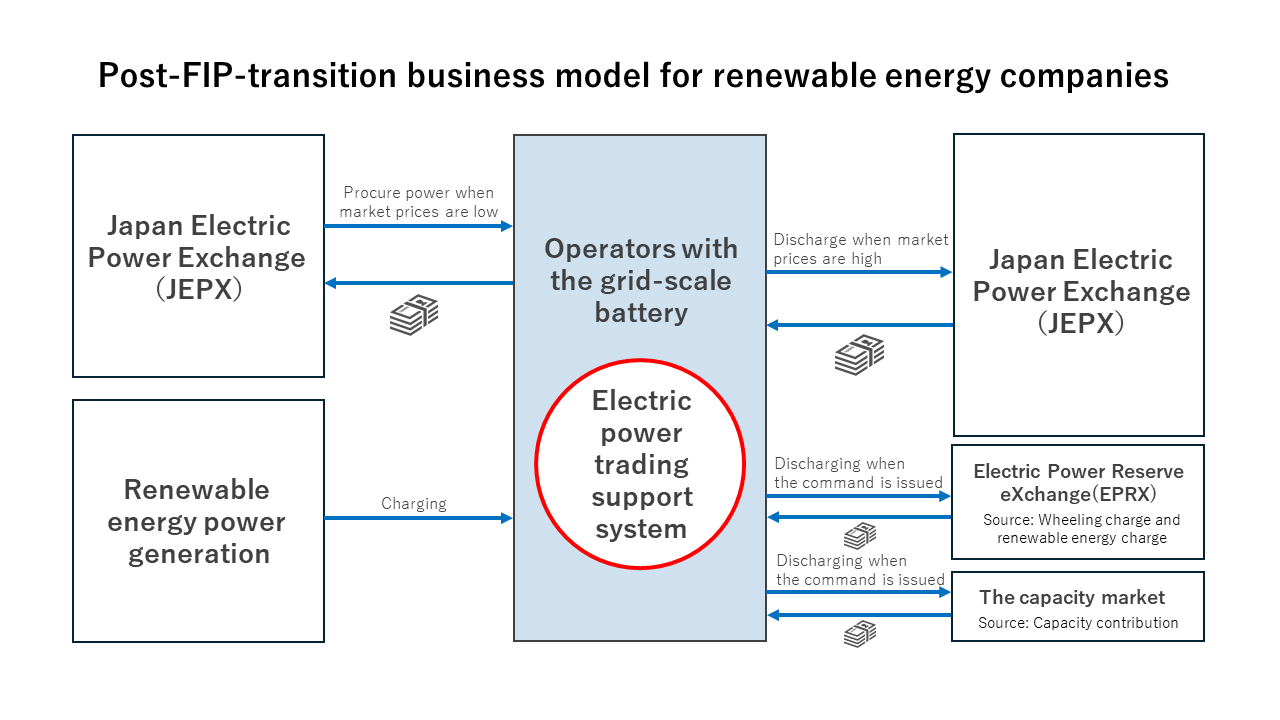

Team leader Ishibashi, who has been with Fuji Electric for 14 years, says, "Because of this change, there is growing interest in systems that use storage batteries to purchase power when the market price is low and sell when it’s high. To achieve this, starting from FY2022 we decided to develop an energy transaction support system that would formulate optimal power trading plans by forecasting power market prices and the amount of renewable energy generated.
Can create optimal trading plans
This electric power trading support system that we are developing also addresses another change that will accompany the FIP transition.
The worst-case scenario is that disruptions in the supply-demand balance could result in power outages. Given this, every day, power producers must submit their operating plans of energy equipment in advance to the Organization for Cross-regional Coordination of Transmission Operators, JAPAN. The FIT had no penalties for generating less power than planned, but under the FIP, power producers must pay imbalance charge based on any differences between the planned and actual amounts.
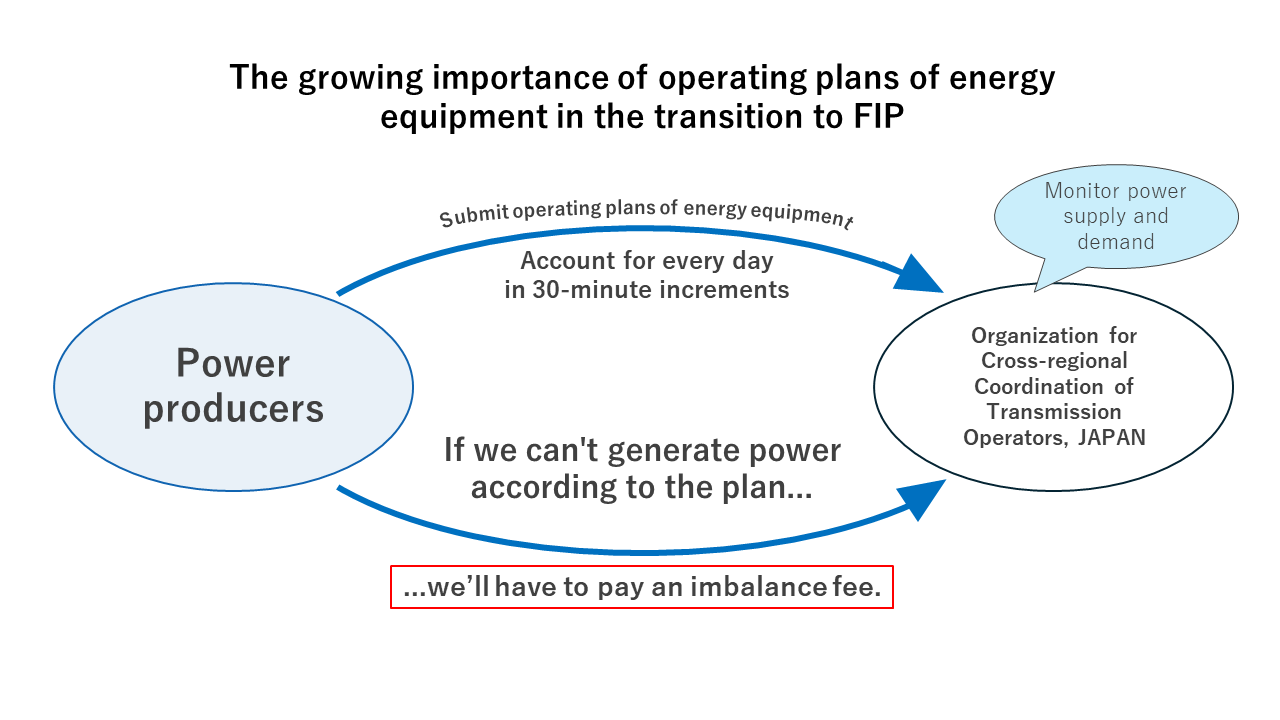

Renewable energy, especially photovoltaic power generation, is prone to imbalances because it is easily affected by weather conditions.
"Since FIP started, power producers have to develop optimal operating plans of energy equipment that can mitigate any loss of profits caused by imbalances,” says Arai, who joined Fuji Electric four years ago. “The energy transaction support system that we are developing incorporates a mechanism that automatically determines the best timing to bid on the power market based on market price forecasts. This will make it easy to create optimal transaction and operating plans of energy equipment.”
The key is risk consideration and integration of multiple models
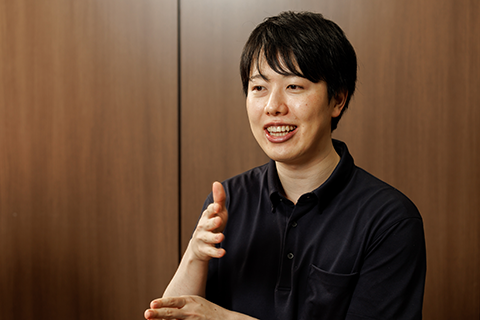
In the 1990s, Fuji Electric became the first company in Japan to deliver an electric power demand forecasting system to an electric power company. Ever since, we have continued to cultivate forecasting and optimization technologies, including demonstration tests of smart communities in Kitakyushu City, Fukuoka Prefecture.
In April 2023, Fuji Electric announced a joint study with Professor Ryuji Matsuhashi, a leading expert in the field of electric power demand forecasting and optimization at the Graduate School of Engineering at the University of Tokyo. The aim of the study is to develop a technology that uses AI to forecast solar power generation and market prices, and that has better tolerance for weather forecast errors.
Ikekawa, who joined Fuji Electric three years ago and joined the team last year, is in charge of forecasting solar power generation. About the results of their joint research over the past year, he says, “We’ve been sharing roles with the university side as we move forward with this joint study, and we’ve found that it has a synergistic effect. For example, reviewing each other's results makes our research more accurate.
We achieved better prediction accuracy by combining multiple weather forecasts and other such information. Forecast tolerance can differ by region and by season, so we simulated multiple regions over the course of the year to achieve our target of error of 10% or less."
Adopt financial engineering and multiple machine learning models
Ishibashi, who is in charge of forecasting power market prices, decided to incorporate multiple machine learning models, whereas conventional systems would have just one. “Once we had more input data, we were able to improve accuracy by combining and integrating multiple machine learning models,” he says. “We are finally seeing the course of action of that integration."
Another feature of this system is how it utilizes expertise from different fields to solve problems.
Typically, a transaction plan is based on forecasts of power generation amounts and market prices. However, the problem was that users who rely too much on forecasting will see their profits deteriorate when the forecast is wrong. Arai, who is in charge of optimizing trading plans, tried an approach that applied financial engineering techniques.
"It may seem at first like finance and electric power trading are totally unrelated, but they do have one thing in common: reducing the risk of fluctuations in profits. That’s why we decided to incorporate financial engineering expertise, which made it possible to create multiple scenarios for market prices based on the forecast tolerance. Using these scenarios allows us to recommend a plan that will generate stable profits even when the forecast is wrong. ”

Achieve better accuracy and labor saving through flexible thinking
The idea of incorporating methods from different fields began when Ishibashi, who "likes to be cautious in everything he does," called to start a study group within the team. “We split up tasks like participating in conferences and talking to outside experts so we can share information and discuss the latest technology trends,” says Ikekawa. “Doing this has broadened my horizons.” According to Arai, "When people with different areas of expertise come together, it facilitates the creation of new ideas."
After a process of trial and error, the three of them achieved a 13% improvement over the conventional tolerance for forecast values of market prices. They were also able to achieve quick turnaround in drafting trading plans, something that normally requires experts and a great deal of time.
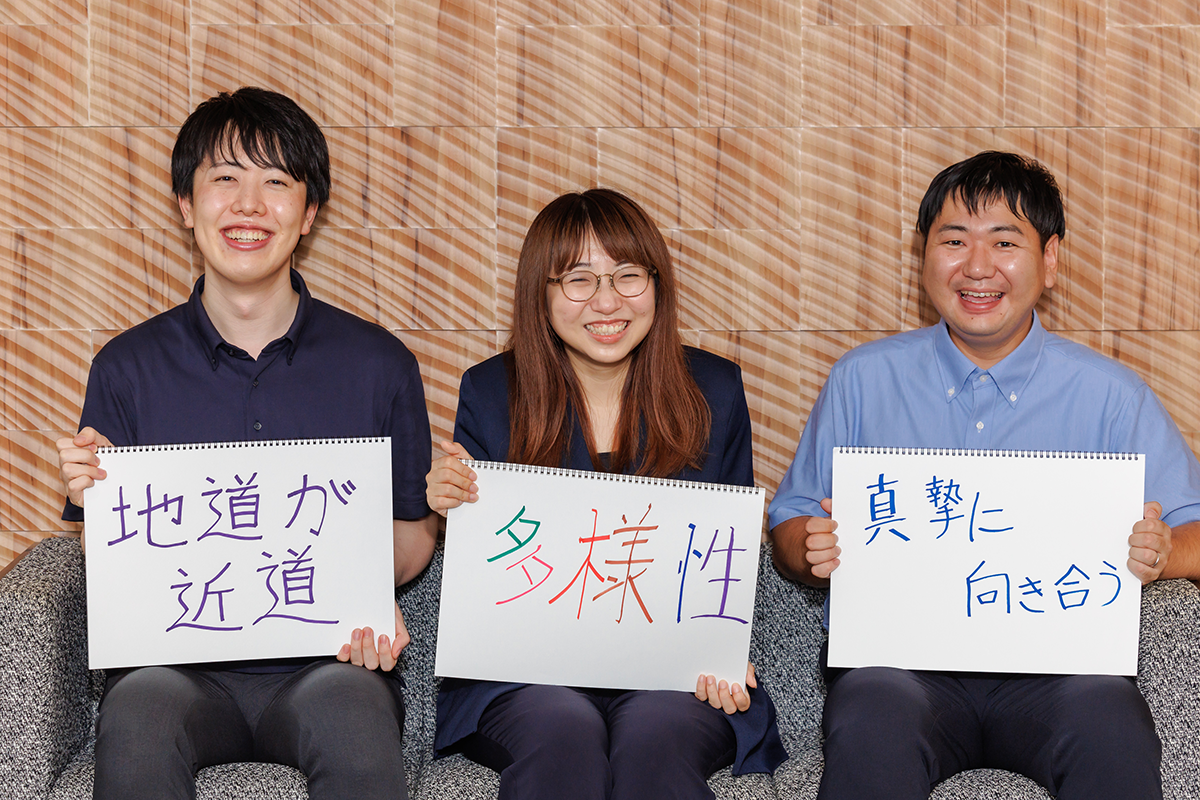
Ikekawa (left) wrote, “Steady progress is the shortcut,” expressing his own feelings of growth since joining the team.
Arai (center) wrote, using a six-color pen, "Seek diversity, experience different things, and discover what you want to do."
Ishibashi (right) wrote, "Approach things sincerely. If you decide to do something, see it through to the end. Those experiences will help you grow.”
A step ahead of market entry in FY2025
The electric power trading support system will be incorporated as an application into an energy management system (EMS) for storage batteries manufactured by Fuji Electric, scheduled for commercialization in FY2025.
Ishibashi is now in talks with the business divisions, marketing staff, and system developers to improve its functionality and usability. Going forward, there are also plans to incorporate the app into the EMS and conduct test operation.
"Since we are building the system from a very general perspective, I want us to organize the results of the test operation and use it to make the product even better," says Ishibashi.
Basically every department in the company is involved in this endeavor, and it is one step away from commercialization. This electric power trading support system, which the project team created through a process of trial and error, will contribute to the decarbonization movement.
Recommended
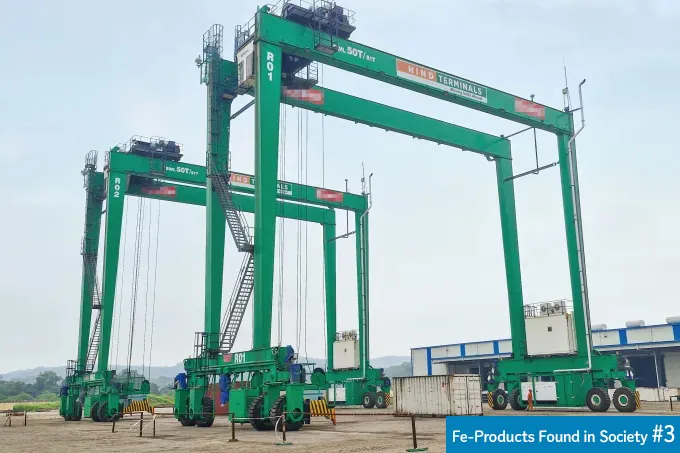
July 30,2025

July 28,2025
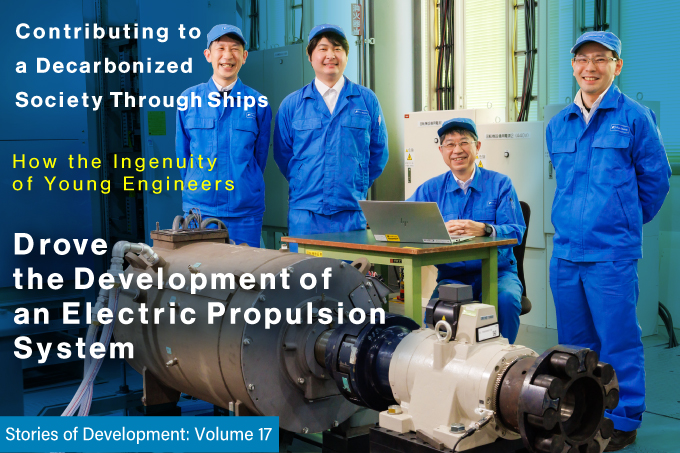
July 7,2025

June 27,2025
